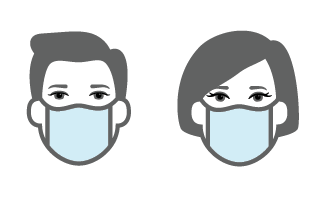As youth sports kick off, watch for signs of heat illness
STARKVILLE, Miss. -- The first of August is usually one of the hottest stretches of the year in Mississippi -- not the best timing for the many high school and college athletes who begin practices and camps during that time.
Because the temperatures associated with fall sports are still weeks from arriving, managing heat exposure and staying hydrated are key for anyone working or playing outside to prevent heat-related illness.
“Your body is around 60% water, and you lose water each day through breathing, perspiration and digestion,” said Dottie Kenda, registered dietitian with the Mississippi State University Extension Service Office of Nutrition Education. “Your need for water is met through the beverages you drink and the foods you eat, especially foods with high water content, such as fruits and vegetables.”
Kenzie Hargrove, a doctoral student in kinesiology at MSU, is focusing part of her research on measuring the amount of sweat and sodium lost by young cross-country athletes and providing personalized hydration recommendations to optimize safety and performance.
“In Mississippi, we like to say that we are used to the heat. While people who have always lived here may believe they are acclimatized, it does not mean that they are not at risk,” she said. “Many adults and kids spend a great deal of time in climate-controlled settings like air-conditioned homes and offices, so their bodies are not fully prepared to handle the stress of physical activity in hot weather.”
Four types of heat illnesses seen in athletes and people who work outside are heat cramps, heat syncope, heat exhaustion and heatstroke.
Heat cramps are not immediately dangerous and can be relieved by resting and ingesting fluids and sodium, but the other heat illnesses pose a much greater threat. Heat cramps may be an indication that the athlete needs to take a break before their condition deteriorates.
“Supervisors, coaches, players and training staff should be attuned to recognize symptoms such as headache, excessive thirst, dizziness, changes in sweat rate, paleness and mental confusion,” Hargrove said.
“If an athlete is displaying symptoms of heat illness, they should immediately be brought off the field and assessed,” she said. “These signs should not be ignored because heat exhaustion can quickly develop into heatstroke if the individual’s core temperature continues to rise.”
A core temperature of 104 degrees Fahrenheit indicates heatstroke, which is a life-threatening emergency. At this point, the person’s body is no longer working to cool itself, and the continuous increase in temperature can be fatal.
“The best way to rapidly cool someone down is through cold-water immersion,” Hargrove said.
Coaches and training staff should also be able to identify if an athlete is drinking too many fluids, as this can lead to hyponatremia, Hargrove said.
For people who prefer flavored water, Kenda recommended trying fruit-, vegetable- and herb-infused waters.
“One way to add flavor to water is to slice fruits like apples, strawberries and oranges or vegetables like cucumbers and celery and pour them into a container with water before refrigerating it for at least an hour,” Kenda said. “To have ice-cold water all day, freeze water in a freezer-safe bottle before going outside.”
Hargrove noted that young athletes do not have the same response to heat as adults. Sweat responses of young athletes are not as mature as that of adults, which may point to trouble with thermoregulation. A lack of appropriate recovery can be a major factor in an athlete’s ability to withstand harsh heat.
“Two-a-day practices especially may increase risk of heat illness because they do not give athletes enough time to recover, thus there is some physiological ‘carry-over’ strain from the previous practice as well as potentially dehydration,” she said. “The nature of many youth sports requires a lot of stop-and-go, high-intensity activity.
“If not given adequate rest and recovery, this can also greatly increase an athlete’s risk of heat injury,” she said.
Many of the same precautions and risks also apply to farm workers as they enter harvest season.
Another preparation for working or practicing in hot weather is wearing lightweight, loose-fitting clothing. For athletes, this means unnecessary clothing should not be worn, as it can retain heat up against skin.
“Often the urgency of needing to complete an objective, like harvesting as much as possible before dark or rain, compels workers to continue working even in high heat conditions,” Hargrove said. “If a worker is trying to get as much done as possible, then they may be working faster or taking on a greater load than needed. This can cause increased metabolic heat production on top of high environmental heat.
“During the first few days of work or practice,” she added, “gradual heat exposure is especially important because people are most susceptible to heat illness during the initial two weeks of acclimation.”
For more information, visit HappyHealthy.ms and click on Tips and Videos.

